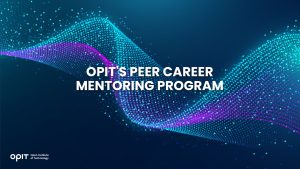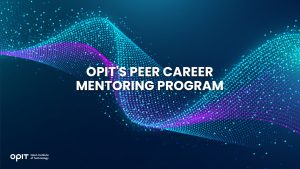

If we think of “computer science” as an umbrella term for so many aspects of computing today, its importance is immediately apparent. Artificial intelligence (and the programming that lies behind it) falls into the computer science category. The same goes for machine learning, data science, networking, cybersecurity, and so many other elements of what make modern computing technology tick.
You need a solid grounding in computer science – both general concepts and theory – to move into one of these areas of specialization. And if you need to get that grounding on a budget, these free computer science courses teach you what you need to know and come with a handy certification.
Top Free Certified Computer Science Online Courses
As surprising as it may seem, you don’t have to pay money to get an education in computer science that employers actually care about. Free courses exist. And many of these free online computer science courses deliver a certification that proves your knowledge and comes from an institution that employers respect.
Course 1 – CS50: Introduction to Computer Science (Harvard University)
We’re stretching the definition of “free and certified” with the first course on the list. Though it’s free to take (and you get an audit of your performance without paying a penny), the verified certification for Harvard’s CS50 course costs $189 (approx. €175).
Assuming you’re willing to part with the cash, this course gives you a certificate from one of the United States’ most respected institutions, in addition to a crash course in computer science fundamentals. Over 11 weeks of self-paced learning (you’ll need to commit at least 10 hours per week to the course) you’ll develop a fundamental understanding of computer science and the programming that underpins it.
Concepts covered include data structures, abstraction, web development, and algorithms, creating a course that melds the math of modern computing with the theoretical concepts you’ll apply in the real world. Prospective programmers enjoy some diversity, too, as the course teaches the basics of several languages. Python, C, JavaScript, and HTML are all covered, though not in enough detail for you to achieve mastery in any of them. Still, as online certified courses for computer science go, CS50 delivers a prestigious certificate and exposes you to ambitious peers who may offer networking potential beyond the course content.
Course 2 – CS50’s Computer Science for Business Professionals (Harvard University)
It’s hard to look beyond Harvard when it comes to free computer science courses because you’re getting education and certification from a top university. With CS50 Computer Science for Business Professionals, Harvard moves beyond the tech-centric approach of its usual CS50 course to demonstrate how computer science principles apply in a real-world setting.
It’s a short course, clocking in at six weeks of study and only requiring two-to-six hours of work per week. That makes it perfect for professionals who want to boost their knowledge without a full-time commitment. You’ll tackle more high-level concepts in computer science, including the fundamentals of cloud computing and how to build technology stacks. All of which makes this like a speed run through of what you need to know about computing on a business level.
That’s not to say you won’t learn any technical theory. Several programming languages are covered (albeit in short-form style), as are the basics of computational thinking. But like CS50 above, certification comes at a cost, even if the course itself is free. Paying for an optional upgrade with EDX (through which the course is offered) is the only way to nab your certificate, if you do get a free course audit to demonstrate completion regardless.
Course 3 – Introduction to Computer Science and Programming Using Python (Massachusetts Institute of Technology)
Offered in conjunction with the EDX platform, this computer science online course takes a Python-focused approach to its teaching. Unlike CS50, which covers a wide range of topics in brief, MIT’s course focuses on how computer science is like a tool that you can use to create software and algorithms. Python 3.5 is the technology behind that tool and you’ll learn how to use it by examining and analyzing real-world problems.
The nine-week course starts by demonstrating the basics of Python (some self-learning and expansion of these concepts may be required) before moving into algorithms. Once you’ve gotten to grips with basic algorithm creation, you’ll learn how to test what you create and how those algorithms become the building blocks of complex data structures.
You have to make a substantial time commitment with this course, with MIT requiring you to spend at least 14 hours per week on your studies if you wish to stick to the nine-week schedule. And though effective in teaching you the basics of Python, the course is really a primer for a second MIT course – Introduction to Computational Thinking and Data Science – that requires payment. But it’s a useful course as a standalone product, but you’ll have to pay a fee to EDX if you want a course-centric certificate.
Factors to Consider When Choosing a Free Certified Computer Science Online Course
The trio of free online computer science courses discussed above each offer something different. Depending on your choice, you’ll get a bottom-up crash course in the theory, a practical understanding of how computer science works in a business context, or an in-depth guide to using Python. But when choosing between the three courses above (or any other courses you find) you must consider the following factors.
The Course Content and Its Relevance to Your Goals
The big question here is – what do you want to achieve with the course?
Sure, having a certificate, especially one with a major university’s name on it, is nice. But if that certificate demonstrates that you’ve learned skills that you don’t need for your intended career path then it’s not worth the paper it’s printed on.
Think of choosing a course like making an investment on which you expect a return. Outline your goals – both learning-centric and career-based – for taking the course. Then, find a course that helps you to reach those goals through laser-focused learning on topics you’ll use in the future.
Course Duration and Flexibility
For a young learner without full-time work or family commitments, taking on a computer science online course that requires months of study may not be a big deal. But that’s not the case for everybody. If you have limited hours available during the week, you need a course that you can fit into those hours rather than one that forces you to fit your life around the course.
Thankfully, most free online computer science courses make allowances for schedule flexibility by taking a self-paced learning approach. You’ll get access to all of the course resources upfront, allowing you to choose when you study. You may be able to get ahead during one week in preparation for a week where you know you can’t commit as much time, giving you the flexibility you need to fit the course into your schedule.
The Instructors and Their Expertise
Would you want to learn the theory of how to pilot a plane from somebody who’s never been up in the air? Of course you wouldn’t, and you must adopt the same attitude when choosing a computer science course.
Check the faculty list associated with the course (most reputable courses tell you who created them) and dig into their individual credentials. What have they done in the computer science industry? Where did they learn what they know? The answers to these questions tell you if your instructors and, by extension, your course are credible.
The Value of the Certification
When it comes to certification, look beyond the website that offers the course and instead focus on the institution that created it. For example, CS50’s Computer Science for Business Professionals is offered via the EDX platform, which doesn’t mean much to potential employers. But that certificate comes with a stamp of approval from Harvard University, which is a school that’s going to immediately raise eyebrows if it’s on your CV.
The point is that reputation matters, though it’s the reputation of the course creator that matters above that of the course platform. The more prestigious the name on the piece of paper, the more valuable the certificate is in the eyes of employers.
Tips for Successfully Completing a Free Certified Computer Science Online Course
With the tips for sifting through the sands of free computer science courses established, let’s round things off with some quick tips that’ll help you succeed in your studies:
- Set clear goals for your education from the outset, with those goals aligning with your current experience level and desired outcomes.
- Create a study schedule that fits around your commitments and stick to it as closely as you can.
- Don’t skip assignments or practical sessions because everything included in the course is there to teach you something valuable.
- Engage with the course community both to get advice from your peers and to potentially create networking opportunities.
- Dedicate time to revision and research when preparing for exams or practical assessments to ensure you fully understand the course content.
Get Certified for Free and Improve Your Job Prospects
Given the importance of computer science to modern business – even the simplest of companies use software and have networks – it’s reasonable to want to build your knowledge of the subject. Free online computer science courses allow you to do that in exchange for a time commitment, with many allowing you to inject some flexibility into your study schedule.
Explore the three courses highlighted here, and look beyond them to more specialized courses once you’re confident in the foundational knowledge you’ve built. And remember – even a certificate from a free course has value in the job market if that course was created by a recognized institution.
Related posts

Source:
- Raconteur, published on November 06th, 2025
Many firms have conducted successful Artificial Intelligence (AI) pilot projects, but scaling them across departments and workflows remains a challenge. Inference costs, data silos, talent gaps and poor alignment with business strategy are just some of the issues that leave organisations trapped in pilot purgatory. This inability to scale successful experiments means AI’s potential for improving enterprise efficiency, decision-making and innovation isn’t fully realised. So what’s the solution?
Although it’s not a magic bullet, an AI operating model is really the foundation for scaling pilot projects up to enterprise-wide deployments. Essentially it’s a structured framework that defines how the organisation develops, deploys and governs AI. By bringing together infrastructure, data, people, and governance in a flexible and secure way, it ensures that AI delivers value at scale while remaining ethical and compliant.
“A successful AI proof-of-concept is like building a single race car that can go fast,” says Professor Yu Xiong, chair of business analytics at the UK-based Surrey Business School. “An efficient AI technology operations model, however, is the entire system – the processes, tools, and team structures – for continuously manufacturing, maintaining, and safely operating an entire fleet of cars.”
But while the importance of this framework is clear, how should enterprises establish and embed it?
“It begins with a clear strategy that defines objectives, desired outcomes, and measurable success criteria, such as model performance, bias detection, and regulatory compliance metrics,” says Professor Azadeh Haratiannezhadi, co-founder of generative AI company Taktify and professor of generative AI in cybersecurity at OPIT – the Open Institute of Technology.
Platforms, tools and MLOps pipelines that enable models to be deployed, monitored and scaled in a safe and efficient way are also essential in practical terms.
“Tools and infrastructure must also be selected with transparency, cost, and governance in mind,” says Efrain Ruh, continental chief technology officer for Europe at Digitate. “Crucially, organisations need to continuously monitor the evolving AI landscape and adapt their models to new capabilities and market offerings.”
An open approach
The most effective AI operating models are also founded on openness, interoperability and modularity. Open source platforms and tools provide greater control over data, deployment environments and costs, for example. These characteristics can help enterprises to avoid vendor lock-in, successfully align AI to business culture and values, and embed it safely into cross-department workflows.
“Modularity and platformisation…avoids building isolated ‘silos’ for each project,” explains professor Xiong. “Instead, it provides a shared, reusable ‘AI platform’ that integrates toolchains for data preparation, model training, deployment, monitoring, and retraining. This drastically improves efficiency and reduces the cost of redundant work.”
A strong data strategy is equally vital for ensuring high-quality performance and reducing bias. Ideally, the AI operating model should be cloud and LLM agnostic too.
“This allows organisations to coordinate and orchestrate AI agents from various sources, whether that’s internal or 3rd party,” says Babak Hodjat, global chief technology officer of AI at Cognizant. “The interoperability also means businesses can adopt an agile iterative process for AI projects that is guided by measuring efficiency, productivity, and quality gains, while guaranteeing trust and safety are built into all elements of design and implementation.”
A robust AI operating model should feature clear objectives for compliance, security and data privacy, as well as accountability structures. Richard Corbridge, chief information officer of Segro, advises organisations to: “Start small with well-scoped pilots that solve real pain points, then bake in repeatable patterns, data contracts, test harnesses, explainability checks and rollback plans, so learning can be scaled without multiplying risk. If you don’t codify how models are approved, deployed, monitored and retired, you won’t get past pilot purgatory.”
Of course, technology alone can’t drive successful AI adoption at scale: the right skills and culture are also essential for embedding AI across the enterprise.
“Multidisciplinary teams that combine technical expertise in AI, security, and governance with deep business knowledge create a foundation for sustainable adoption,” says Professor Haratiannezhadi. “Ongoing training ensures staff acquire advanced AI skills while understanding associated risks and responsibilities.”
Ultimately, an AI operating model is the playbook that enables an enterprise to use AI responsibly and effectively at scale. By drawing together governance, technological infrastructure, cultural change and open collaboration, it supports the shift from isolated experiments to the kind of sustainable AI capability that can drive competitive advantage.
In other words, it’s the foundation for turning ambition into reality, and finally escaping pilot purgatory for good.

The Open Institute of Technology (OPIT) is the perfect place for those looking to master the core skills and gain the fundamental knowledge they need to enter the exciting and dynamic environment of the tech industry. While OPIT’s various degrees and courses unlock the doors to numerous careers, students may not know exactly which line of work they wish to enter, or how, exactly, to take the next steps.
That’s why, as well as providing exceptional online education in fields like Responsible AI, Computer Science, and Digital Business, OPIT also offers an array of career-related services, like the Peer Career Mentoring Program. Designed to provide the expert advice and support students need, this program helps students and alumni gain inspiration and insight to map out their future careers.
Introducing the OPIT Peer Career Mentoring Program
As the name implies, OPIT’s Peer Career Mentoring Program is about connecting students and alumni with experienced peers to provide insights, guidance, and mentorship and support their next steps on both a personal and professional level.
It provides a highly supportive and empowering space in which current and former learners can receive career-related advice and guidance, harnessing the rich and varied experiences of the OPIT community to accelerate growth and development.
Meet the Mentors
Plenty of experienced, expert mentors have already signed up to play their part in the Peer Career Mentoring Program at OPIT. They include managers, analysts, researchers, and more, all ready and eager to share the benefits of their experience and their unique perspectives on the tech industry, careers in tech, and the educational experience at OPIT.
Examples include:
- Marco Lorenzi: Having graduated from the MSc in Applied Data Science and AI program at OPIT, Marco has since progressed to a role as a Prompt Engineer at RWS Group and is passionate about supporting younger learners as they take their first steps into the workforce or seek career evolution.
- Antonio Amendolagine: Antonio graduated from the OPIT MSc in Applied Data Science and AI and currently works as a Product Marketing and CRM Manager with MER MEC SpA, focusing on international B2B businesses. Like other mentors in the program, he enjoys helping students feel more confident about achieving their future aims.
- Asya Mantovani: Asya took the MSc in Responsible AI program at OPIT before taking the next steps in her career as a Software Engineer with Accenture, one of the largest IT companies in the world, and a trusted partner of the institute. With a firm belief in knowledge-sharing and mutual support, she’s eager to help students progress and succeed.
The Value of the Peer Mentoring Program
The OPIT Peer Career Mentoring Program is an invaluable source of support, inspiration, motivation, and guidance for the many students and graduates of OPIT who feel the need for a helping hand or guiding light to help them find the way or make the right decisions moving forward. It’s a program built around the sharing of wisdom, skills, and insights, designed to empower all who take part.
Every student is different. Some have very clear, fixed, and firm objectives in mind for their futures. Others may have a slightly more vague outline of where they want to go and what they want to do. Others live more in the moment, focusing purely on the here and now, but not thinking too far ahead. All of these different types of people may need guidance and support from time to time, and peer mentoring provides that.
This program is also just one of many ways in which OPIT bridges the gaps between learners around the world, creating a whole community of students and educators, linked together by their shared passions for technology and development. So, even though you may study remotely at OPIT, you never need to feel alone or isolated from your peers.
Additional Career Services Offered by OPIT
The Peer Career Mentoring Program is just one part of the larger array of career services that students enjoy at the Open Institute of Technology.
- Career Coaching and Support: Students can schedule one-to-one sessions with the institute’s experts to receive insightful feedback, flexibly customized to their exact needs and situation. They can request resume audits, hone their interview skills, and develop action plans for the future, all with the help of experienced, expert coaches.
- Resource Hub: Maybe you need help differentiating between various career paths, or seeing where your degree might take you. Or you need a bit of assistance in handling the challenges of the job-hunting process. Either way, the OPIT Resource Hub contains the in-depth guides you need to get ahead and gain practical skills to confidently move forward.
- Career Events: Regularly, OPIT hosts online career event sessions with industry experts and leaders as guest speakers about the topics that most interest today’s tech students and graduates. You can join workshops to sharpen your skills and become a better prospect in the job market, or just listen to the lessons and insights of the pros.
- Internship Opportunities: There are few better ways to begin your professional journey than an internship at a top-tier company. OPIT unlocks the doors to numerous internship roles with trusted institute partners, as well as additional professional and project opportunities where you can get hands-on work experience at a high level.
In addition to the above, OPIT also teams up with an array of leading organizations around the world, including some of the biggest names, including AWS, Accenture, and Hype. Through this network of trust, OPIT facilitates students’ steps into the world of work.
Start Your Study Journey Today
As well as the Peer Career Mentoring Program, OPIT provides numerous other exciting advantages for those who enroll, including progressive assessments, round-the-clock support, affordable rates, and a team of international professors from top universities with real-world experience in technology. In short, it’s the perfect place to push forward and get the knowledge you need to succeed.
So, if you’re eager to become a tech leader of tomorrow, learn more about OPIT today.
Have questions?
Visit our FAQ page or get in touch with us!
Write us at +39 335 576 0263
Get in touch at hello@opit.com
Talk to one of our Study Advisors
We are international
We can speak in:


